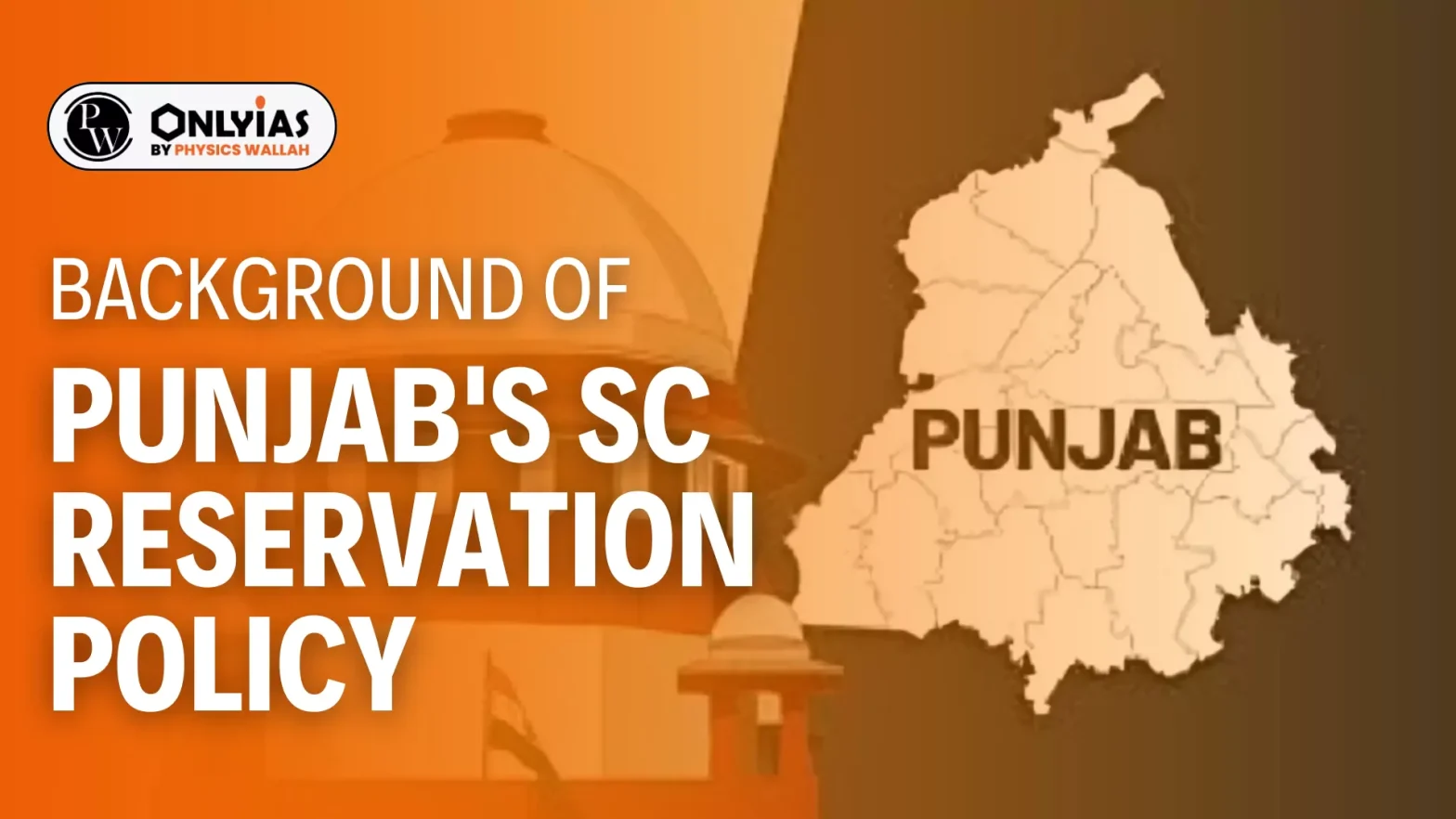In 1975, Punjab government divided 25% SC reservation into two categories.
Background of Punjab’s SC Reservation Policy
- First category: Reserved for Balmiki and Mazhabi Sikh communities. These communities were given first preference in education and public employment.
- Second category: Consisted of the rest of the SC communities.
- This notification remained in force for nearly 30 years.
Enroll now for UPSC Online Course
Legal Challenges to Sub-Classification
- 2004: Supreme Court struck down similar law in Andhra Pradesh (E.V. Chinnaiah case).
- Court held sub-classification violates right to equality.
- SC list must be treated as a single, homogenous group.
- Article 341: President has power to create SC list, states can’t interfere.
- Punjab & Haryana High Court struck down 1975 Punjab notification.
Punjab’s Attempt to Reintroduce SubClassification
- October 2006: Punjab passed SC and Backward Classes (Reservation in Services) Act.
- Act reintroduced first preference for Balmiki and Mazhabi Sikh communities.
- 2010: High Court struck down this provision again.
- Punjab government appealed to Supreme Court 2014.
- 2014: Case referred to five-judge Constitution Bench (Davinder Singh v State of Punjab).
Reconsidering the E.V. Chinnaiah Ruling
- 2020: Constitution Bench held 2004 decision needs reconsideration.
- Court recognized “unequals within the list of Scheduled Castes“.
- Concept of “creamy layer” introduced in SC reservations (Jarnail Singh case, 2018).
- States argue sub-classification is application of creamy layer formula.
- Seven-judge Bench now gave the verdict.
Check Out UPSC CSE Books From PW Store
Impact of Sub-Classification Strategy
- Affects Balmikis and Mazhabi Sikhs in Punjab.
- Impacts Madiga community in Andhra Pradesh.
- Paswans in Bihar to be affected.
- Jatavs in UP under consideration.
- Arundhatiyars in Tamil Nadu also impacted.
Arguments in Favor of Sub-Classification
- Punjab AG: States can tamper with Presidential list under Article 341.
- Article 16(4) allows reservations for “adequately” represented classes.
- Article 342A empowers states to maintain separate backward classes list.
- Former AG KK Venugopal: Sub-classification necessary to help weakest sections.
- Without it, purpose of reservations would be defeated.
Arguments Against Sub-Classification
- Senior Advocate Sanjay Hegde: All SC communities suffered from untouchability.
- Constituent Assembly chose not to compare degrees of suffering.
- Sub-classification would treat communities within SC category differently.
- Violates the principle of treating SC list as a single, homogenous group.
- Challenges the constitutional mandate of Article 341.
Now what has happended
- In a 6:1 landmark verdict, Supreme Court allowed sub-categorisation of scheduled castes in reservations.
- Seven-judge Constitution bench headed by CJI DY Chandrachud ruled on permissibility of sub-classification.
- Ruling allows wider protection for underrepresented groups within SCs and STs
- Court held that “historical and empirical evidence indicates that Scheduled castes are not a homogenous class”.
- Bench examined if 2004 judgment in EV Chinnaiah vs State of Andhra Pradesh needs a relook.
- 2004 judgment held Scheduled Castes formed a homogenous group, disallowing sub-division.
Enroll now for UPSC Online Classes
Conclusion
Ruling will have crucial consequences for states wanting to give wider protection to underrepresented castes. Decision allows differentiation between dominant scheduled castes and grossly underrepresented groups.
![]() 2 Aug 2024
2 Aug 2024

